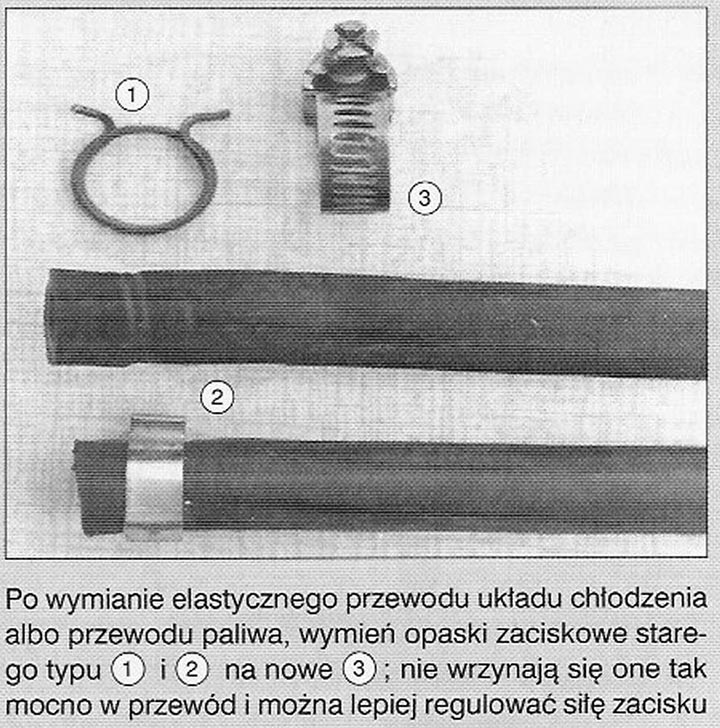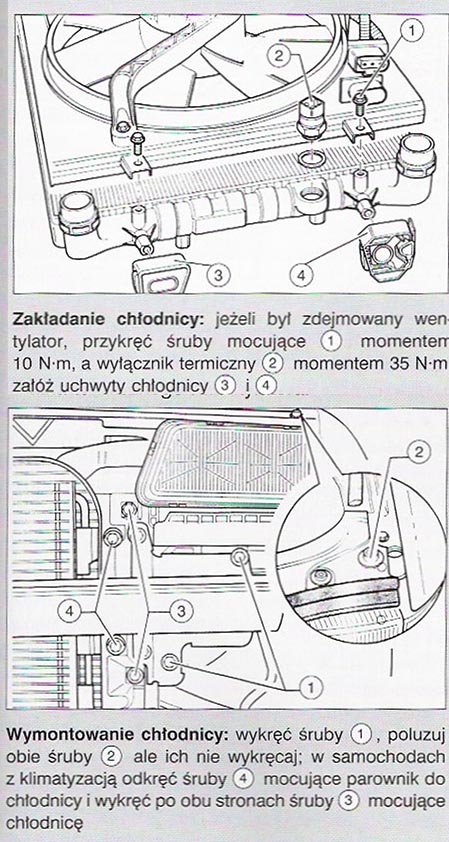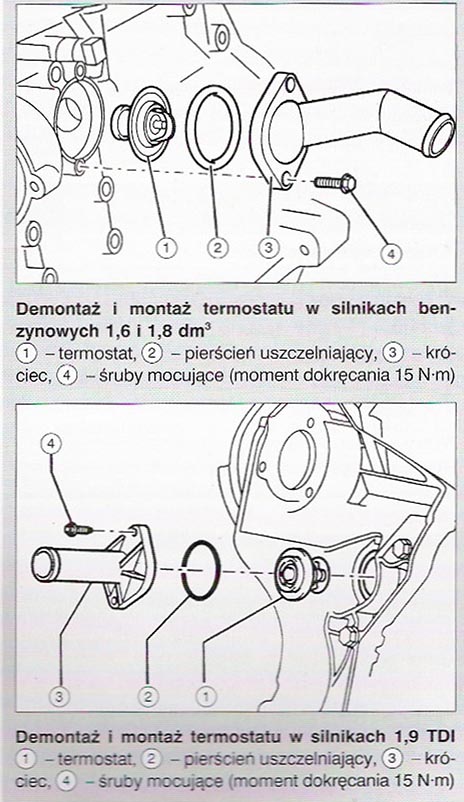Cooling system hoses replacement:
A cracked cooling system hose can be temporarily sealed with adhesive tape. For safety, loosen the expansion tank cover one turn. The system will then not build up to full operating pressure, which will prevent the tape from breaking. Observe the coolant temperature gauge while driving. Replace the damaged cable with a new one as soon as possible. Only buy original cables, shaped at the right angle and always use new zip ties.

1. Pour the coolant into the prepared vessel.
2. Loosen the zip ties and remove the damaged wires.
3. Loosen the seized wire ends with a screwdriver: insert a screwdriver between the pipe and the stub pipe and carefully slide it around the pipe stub to pry out the pipe.
4. Push the new hose on to the connection far enough, so that it cannot slip off.
5. Do not over tighten the zip tie screws, in order not to break the thread and cause leakage of the connection.
Typical cooling system malfunctions.
| Symptom
ailments |
The reasons | Remedies |
| A. Coolant temperature indicator light is on | 1 Broken or too loose pump drive belt | Check the tension or replace the belt |
| 2 Fluid level too low | Top up the liquid | |
| 3 Indicator lamp wire shorted to ground | Remove the cable from the temperature sensor, the light should go out, otherwise there is a short to ground – check the cable routing | |
| 4 Thermostat does not circulate liquid to the radiator (cold cooler) | Remove the thermostat and drive on or tow the car to the garage | |
| 5 The radiator fan does not turn on | Check plugs on thermal switch and fan. Check thermal switch and fan motor | |
| 6 Defective relief valve in the expansion tank cover | Check or have the valve checked, check the cover gasket, replace the cover if necessary | |
| 7 Coolant temperature sensor short circuit | Replace sensor | |
| 8 Clogged radiator or dirty radiator fins | Clean the radiator | |
| B. Insufficient heating | Thermostat does not close completely, the hot coolant circulates too soon with the cooler | Clean it up, possibly replace the thermostat |



 Topping up of coolant antifreeze.
Topping up of coolant antifreeze.